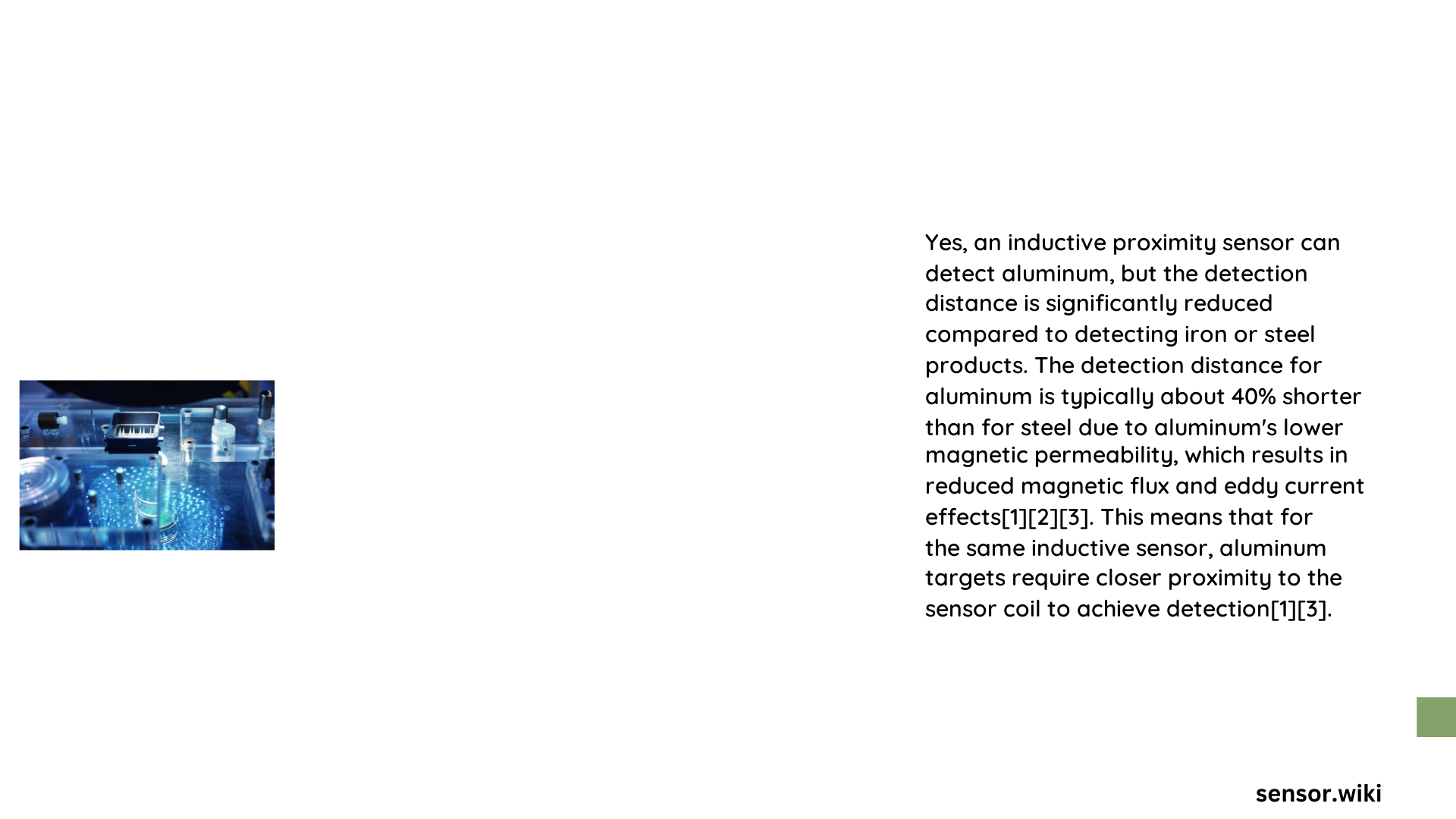Inductive proximity sensors offer complex metal detection capabilities, with aluminum presenting unique challenges due to its non-ferromagnetic properties. While detection is possible, the sensor’s performance varies significantly compared to ferromagnetic metals, requiring specialized sensor technologies and careful selection of detection parameters to ensure reliable and accurate sensing across different industrial applications.
What Makes Aluminum Detection Challenging for Inductive Proximity Sensors?
Aluminum’s unique electromagnetic characteristics create specific detection challenges for inductive proximity sensors. Unlike ferromagnetic metals, aluminum has lower magnetic permeability and different conductivity, which directly impacts sensing performance.
How Do Metal Properties Influence Detection Range?
| Metal Type | Magnetic Permeability | Detection Range Reduction | Typical Sensing Distance |
|---|---|---|---|
| Steel | High | 0% | 10 mm |
| Aluminum | Low | 40-60% | 4-6 mm |
| Copper | Moderate | 50-70% | 3-5 mm |
Key Detection Factors for Aluminum
- Conductivity: Aluminum’s electrical conductivity affects eddy current generation
- Magnetic Permeability: Significantly lower than ferromagnetic metals
- Surface Composition: Purity and oxide layer impact detection reliability
What Sensor Technologies Work Best for Aluminum?
Several advanced sensor technologies address aluminum detection challenges:
- Factor 1 Sensors
- Integrated microcontrollers
- Compensation for non-ferromagnetic metals
-
Uniform sensing distances across metal types
-
High-Frequency Sensors
- Enhanced sensitivity for non-magnetic metals
- Improved signal processing algorithms
- Better performance with aluminum targets
What Are the Practical Limitations?
Detecting aluminum using inductive proximity sensors involves several critical limitations:
- Reduced detection range (approximately 40% of ferromagnetic metal range)
- Sensitivity dependent on aluminum’s specific conductivity
- Potential signal interference from surface oxidation
- Need for specialized sensor configurations
How Can Detection Accuracy Be Improved?
Improving aluminum detection accuracy requires:
- Selecting sensors with built-in compensation technologies
- Calibrating sensors specifically for aluminum targets
- Using high-frequency sensing technologies
- Minimizing environmental interference
What Industries Benefit from Aluminum Detection?
Aluminum detection finds applications in:
- Automotive manufacturing
- Aerospace component inspection
- Packaging machinery
- Robotics and automation
- Metal processing industries
Technical Recommendations for Reliable Aluminum Detection

- Choose sensors with explicit non-ferromagnetic metal support
- Verify sensor specifications for aluminum-specific performance
- Consider environmental factors like temperature and surface conditions
- Implement regular calibration and maintenance protocols
Conclusion
While inductive proximity sensors can detect aluminum, success depends on understanding material properties, selecting appropriate sensor technologies, and implementing precise detection strategies.
Reference:
– Bedook Sensors Inductive Proximity Detection
– Schneider Electric Sensor Guidelines
– Baumer Sensor Technologies
